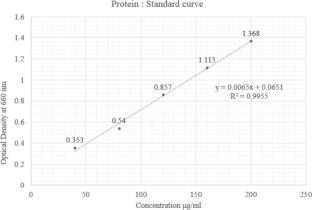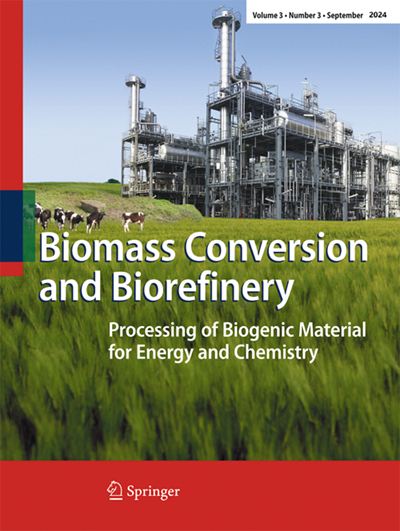Leveraging citrus extract to enhance antioxidant properties of mung bean (Vigna radiata) protein edible films
Abstract
An antioxidant edible film for food safety and preservation is produced from citrus extract and mung bean protein isolate (MBPI). Films were prepared by using different levels of lemon peel extract enriched in phenolics and antioxidants (MBPI). Characterization and testing were carried out for the water solubility, tensile strength, elongation at break, and thickness. MBPI showed a maximum solubility of 105 mg/ml and an optical density of 0.759 (OD_759) at pH 12. These proteins carrying negative charges were extremely soluble at alkaline pH (8–10). MBPI films are fit for high-temperature food preparation on account of their warm steadfastness. Gradually decreasing weight and moisture content resulted in dried citrus peels with 8–12% moisture, reducing the effect of microbial degradation. Film thickness-related polyphenol-rich compounds were enhanced through the interaction between protein functional groups and the phenolic hydroxyl groups. The point of 25% MBPI film tensile strength was 13.18 ± 0.15 N/mm2. Water solubility was 15–30% to allow controlled degradation and barrier properties. The MBP films showed biodegradability in a soil environment as opposed to synthetic films, which lost 10% and 22% weight values by day 10 and day 20, respectively. FTIR analysis indicated that the amide I and II bands were displaced, confirming that hydrogen bonding occurred between the hydroxyl groups of the citrus extract and the amide groups of MBPI. Controlled citrus extract exhibited less phenolic content (0.105 at 100 μg/ml) than elevated antioxidative presence (0.236 at 300 μg/ml). Antioxidant films were obtained at 40% of DPPH radical reduction. A 10% lemon peel extract shows an antibacterial effect with 12.5 ± 0.50 mm against S. aureus and E. coli inhibition zone. Synthetic preservatives can be replaced with plant-based edible films and coatings to curtail plastic waste and enhance food safety and quality as well as shelf life.


 求助内容:
求助内容: 应助结果提醒方式:
应助结果提醒方式:


